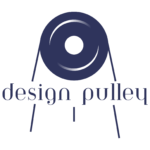When it comes to setting up a new showroom or office, cost management plays a crucial role in determining the overall success of the project. While many brands tend to focus solely on reducing the initial interior cost, it is essential to consider the bigger picture and minimize the overall cost by addressing different types of expenses. In this article, we will explore the importance of identifying various cost factors and how a comprehensive approach can lead to long-term savings and a successful project outcome.
Initial Interior Cost: Defining the Scope and Material Selection
The initial interior cost primarily depends on the design and types of materials chosen for the project. While it is important to keep this cost within budget, it is equally crucial to define the accurate scope of work with detailed specifications from the beginning. Failing to do so can lead to cost overruns later on, which can significantly impact the project’s budget and timeline. While negotiating with vendors, it is crucial to ensure that a reduced quote in the BOQ is not at the expense of compromise in quality.
Maintenance Cost: The Price of Compromised Quality
Some brands try to save costs during the initial interior phase by negotiating hard with the vendor on the BOQ quote. However, this approach often proves counterproductive in the long run. Numerous cases have shown that brands end up spending 30-50% of their initial interior cost on maintenance within just three years of project completion. Investing in high-quality materials and finishes upfront can help avoid these maintenance expenses down the line.
Opportunity Cost: Timelines and Lost Revenue
Delays in project execution not only result in additional costs but also lead to lost opportunities. Every day of delay translates to lost rent and potential sales revenue. By working with a professional interior contractor who prioritizes adhering to timelines, you can minimize the opportunity cost associated with delayed project launches.
Payroll Cost of Projects Team: Efficient Resource Allocation
Engaging with sub-par vendors often leads to increased time commitments and additional due diligence requirements for a company’s projects team. This not only affects productivity but also hampers the team’s ability to focus on critical aspects of the project. Collaborating with professional vendors ensures a lean project structure, enabling your projects team to allocate their time efficiently and concentrate on crucial tasks instead of micromanaging vendor-related issues.
Long-Term Sustainability:
Incorporating sustainable practices and eco-friendly features in your interior fit-out can result in long-term cost savings. Energy-efficient lighting, HVAC systems, and water-saving fixtures not only reduce utility expenses but also contribute to a greener and more sustainable workplace.
The Vendor Selection Factor
In conclusion, while reducing the initial interior cost may seem appealing, it is vital to consider the broader perspective and the impact of each cost category. A well-thought-out vendor selection process can determine the fate of the overall cost of the project. By choosing a vendor solely based on the lowest cost, brands risk compromising on quality, incurring maintenance expenses, and facing delays that result in lost revenue. Instead, a focus on selecting a professional interior contractor who values a comprehensive approach to cost management can lead to long-term savings and a successful project outcome.
Remember, interior fit-outs should be viewed as an investment rather than a mere expense. By prioritizing quality, efficiency, and collaboration with the right professionals, you can create a showroom or office space that not only fits your budget but also enhances your brand image and drives business success.
